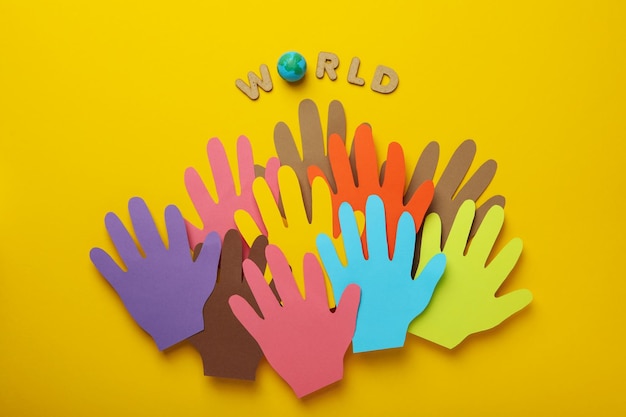
Introduction:
The population of the world has been a subject of fascination, concern, and study for centuries. From the dawn of civilization to the present day, humans have grappled with the complexities of population growth, distribution, and its implications on society, economy, and the environment. As we navigate the 21st century, understanding the dynamics of global population trends becomes increasingly crucial for shaping policies, addressing challenges, and harnessing opportunities for a sustainable future.
**Current State of the World Population**
As of 2024, the global population stands at approximately 7.8 billion people, with projections indicating continued growth in the coming decades. This exponential increase in population has been driven by various factors, including advancements in healthcare, increased life expectancy, improvements in sanitation and hygiene, and technological innovations in agriculture leading to food security.
**Population Growth: A Double-Edged Sword**
While population growth brings opportunities for economic development and cultural diversity, it also poses significant challenges. Rapid population growth strains finite resources, exacerbates environmental degradation, and amplifies social inequalities. Moreover, the uneven distribution of population across regions intensifies disparities in access to healthcare, education, and economic opportunities.

**Regional Disparities in Population Dynamics**
The distribution of the global population is uneven, with some regions experiencing rapid population growth, while others face demographic stagnation or decline. Sub-Saharan Africa, for instance, is projected to have the highest population growth rate, with its population expected to double by 2050. In contrast, countries in Europe and East Asia are grappling with aging populations and declining birth rates, posing challenges for sustaining economic growth and social welfare systems.
**The Global Population: Trends, Challenges, and Opportunities**
The burgeoning global population presents armyriad of challenges that warrant urgent attention and concerted action. One of the most pressing concerns is ensuring access to essential resources such as food, water, and energy for a growing population, particularly in regions grappling with poverty and underdevelopment. Additionally, rapid urbanization fueled by population growth strains infrastructure, exacerbates congestion, and heightens environmental pollution in cities worldwide.
Furthermore, the youth bulge in many developing countries poses both opportunities and challenges. While a youthful population can be a driving force for innovation, entrepreneurship, and economic growth, it also underscores the need for investments in education, healthcare, and job creation to harness the demographic dividend effectively.
Moreover, addressing the impact of population growth on the environment is paramount for mitigating climate change, preserving biodiversity, and ensuring the sustainability of ecosystems. Unsustainable consumption patterns, deforestation, and greenhouse gas emissions associated with population growth pose existential threats to the planet's ecological balance, necessitating urgent action to transition towards more sustainable and equitable development pathways.
**Opportunities for Sustainable Development**
Amidst the challenges posed by population growth, there are also opportunities for fostering sustainable development and enhancing human well-being. Investing in education, particularly girls' education, has been identified as a potent tool for reducing fertility rates, empowering women, and promoting socio-economic development. Educated women are more likely to make informed reproductive choices, participate in the labor force, and contribute to household and community resilience.
Furthermore, promoting access to family planning and reproductive healthcare services is essential for enabling individuals to exercise their reproductive rights, reducing unintended pregnancies, and improving maternal and child health outcomes. Empowering women with the knowledge and means to plan their families not only enhances their autonomy but also contributes to broader societal benefits, including poverty reduction and economic prosperity.
In addition to investing in human capital, sustainable development strategies should prioritize environmental conservation, renewable energy adoption, and sustainable resource management. Transitioning towards a circular economy that minimizes waste, promotes resource efficiency, and fosters eco-friendly technologies can help decouple economic growth from environmental degradation, paving the way for a more sustainable future.
**The Role of Technology and Innovation**
Advancements in technology and innovation hold immense potential for addressing the challenges associated with population growth. From precision agriculture and aquaculture to renewable energy solutions and smart cities, technology can enhance productivity, optimize resource utilization, and improve quality of life for people around the world.
Moreover, digital technologies such as artificial intelligence, big data analytics, and remote sensing offer new opportunities for monitoring population dynamics, predicting demographic trends, and designing evidence-based policies and interventions. Leveraging the power of technology for data-driven decision-making can enable governments, organizations, and communities to better anticipate and respond to the evolving needs of a growing population.
**Conclusion**
The global population presents both challenges and opportunities for humanity in the 21st century. While rapid population growth strains resources, exacerbates environmental degradation, and amplifies social inequalities, it also underscores the urgency of investing in sustainable development, empowering women, and harnessing the potential of technology and innovation.
Addressing the complex interplay of demographic, economic, social, and environmental factors requires collective action, visionary leadership, and a commitment to equity and justice. By embracing a holistic approach that prioritizes human well-being, environmental stewardship, and inclusive growth, we can navigate the complexities of population dynamics and pave the way for a more prosperous, resilient, and sustainable future for generations to come.



You must be logged in to post a comment.